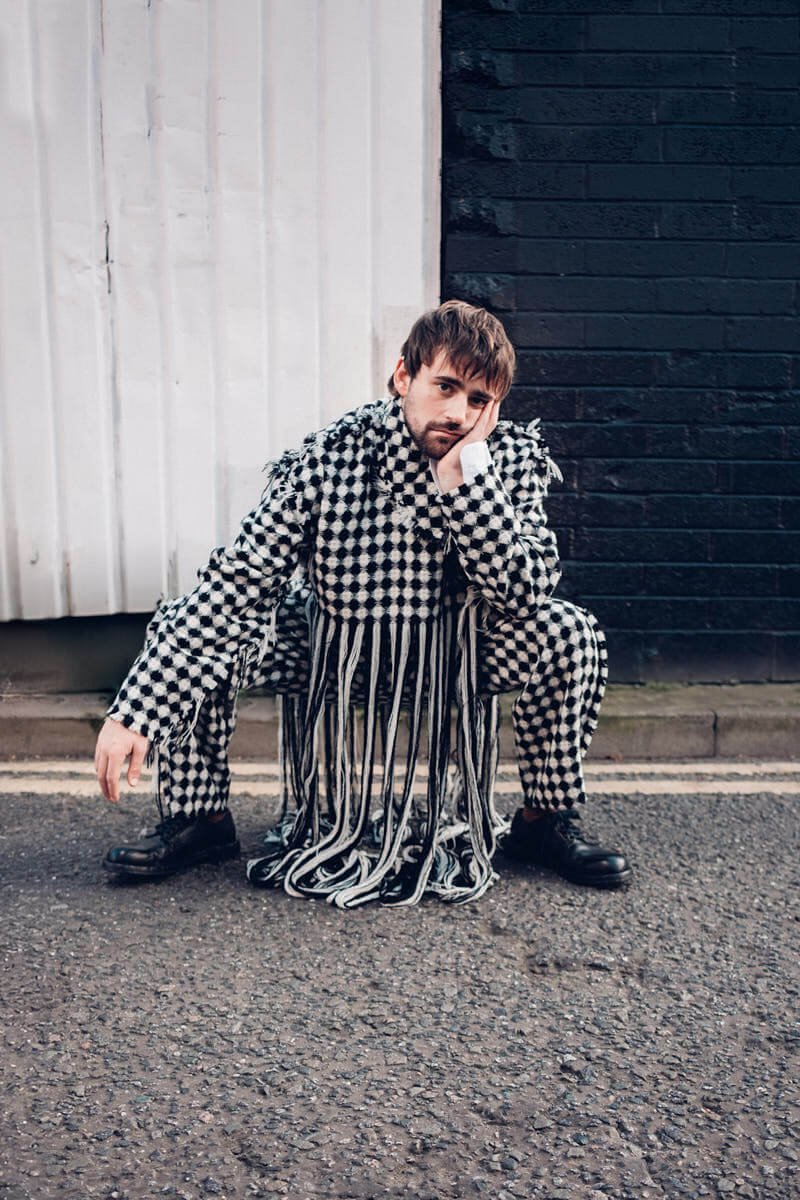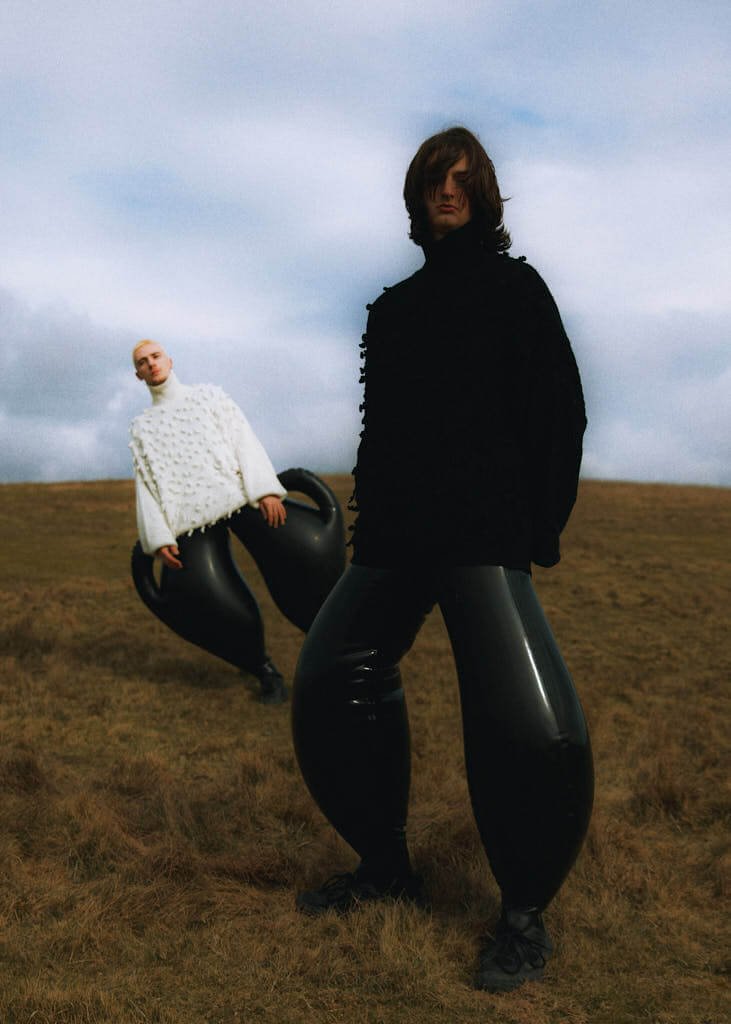.aesthetic talk
VIVIANE SASSEN
*Light, Color, and Identity
written + interview Alban E. Smajli
Viviane Sassen’s work navigates the intricate dance between art and fashion, creating a visual language that is both bold and introspective.
Her mastery of color, light, and form captures moments of transformation, where the mundane transcends into the surreal.
DNA, from the series Lexicon, 2007
© Viviane Sassen and Stevenson (Johannesburg / Cape Town / Amsterdam)
Through a career spanning over three decades, Sassen has continuously pushed the boundaries of photographic expression, drawing from deeply personal experiences and universal themes. Her latest retrospective, "PHOSPHOR: Art & Fashion," offers a profound exploration of identity, intimacy, and the ever-shifting nature of reality, inviting viewers to engage with the complexities of the human experience.
“I hope my work contributes to dissolve the line between photography and ‘fine art’. To be able to move freely between the two is a great gift I cherish.”
Vivanne Sassen speaks with Alban E. Smajli
for LE MILE Magazine, Nr. 37, AGE OF CHANGE / 02/2024 Edition
— at foam amsterdam (Viviane Sassen - PHOSPHOR: Art & Fashion)
Self Portrait, 1990
© Viviane Sassen and Stevenson (Johannesburg / Cape Town / Amsterdam)
Dior, 2019
© Viviane Sassen and Stevenson (Johannesburg / Cape Town / Amsterdam)
Alban E. Smajli
Viviane, your work often blurs the boundaries between art and fashion. How does "PHOSPHOR: Art & Fashion" embody this fusion, and what new narratives are you exploring in your upcoming retrospective?
Vivanne Sassen
I hope my work contributes to dissolve the line between photography and ‘fine art’. I feel there’s definitely a wider acceptance when it comes to the merging of these different worlds; fashion, music, design, photography, art; especially in youth culture. But then again; that has been going on for a few decades now. And I don’t really see that many photographers pervade into the ‘serious’ fine art galleries; it’s still a hand full. To be able to move freely between the two is a great gift I cherish, it is also quite rare I realise. In PHOSPHOR I present my fashion photography simply as one of the chapters in my exhibition. I haven’t put an extra emphasis on it, other than placing it at the end of the show. The way I show my fashion images hasn’t changed; I made an installation with sound and mirrors - the images slowly passing-by, projected on the walls.
"PHOSPHOR" marks a significant homecoming for you at Foam Amsterdam. How has your artistic journey evolved since your first showcase, "Flamboya," in 2008?
Oh dear, the answer to that is so extensive, I’m not sure I can elaborate on that! I think if you look at the various projects I’ve done ever since Flamboya, you would see that there is so much variety - different territories I’ve explored. Both conceptual and visually, ranging from very abstract to very organic, from darkness to light, from experimental surrealist series to more documentary work. The essence is that I don’t want to hold myself back when it comes to exploring new territories within the photographic medium. I’m working with film, sound, texts, collage, paint.
In the AGE OF CHANGE (our next issue ́s theme, no. 37 (FW24), how do you see the role of art and fashion in shaping societal norms and challenging conventions?
I hope that in these often harsh times and political climate, people will still understand the importance of art as a catalyst for life, social issues, philosophical and even spiritual questions. I feel that in the digital age society hasn’t only become more dualistic and extremist, but also more homogenous and generic - which can be a great thread too.
Your photography is renowned for its vibrant use of color and surreal compositions. How do these elements convey the themes of transformation and metamorphosis in your latest exhibition?
I think this comes to a culmination in one of my latest series; Cadaver Exquis. They are based on the ‘exquisite corpse’ technique: a creative game that surrealists were fond of playing. Body parts are connected in ways that produce odd hybrid creatures. I used images from my own archive from various periods of time and cut them up, enlarged them to huge proportions and made collages with these elements. They appear to be floating on the wall - I freed them from the frame so to speak. I’ve always been very interested in the concept of transformation and metamorphosis. In my work the outside often depicts the inner process of transformation, and the surrealist nature of my work helps to visualise these often confusing processes.
Given the rapid changes in digital media and technology, how do you foresee the future of fashion photography evolving in the next decade?
I think technology will make it even easier in terms of making high-quality pictures, and I think there will be even more focus on moving image; still images will probably be subtracted from that. A.I. is another thing though. I think it’s too early to tell what it will mean for fashion photography, but I feel that it will change the industry profoundly. I do think there will still be the need for creative people with a good eye and a sensitivity.
Right now, all the AI images I see, don’t excite me very much; it is as if you can feel there is something missing; a soul. They look cold and fake; just as if someone used a new kind of filter. But still, if AI will evolve and become better, there will be a need for strong concepts (what do you feed the computer?) and strong editing. AI will undoubtedly become huge in commercial outings but I think it won’t be able to replace the need for strong story telling that brands need so desperately nowadays to connect with their customers. And simultaneously, people will keep on longing for ‘real’ things, the stuff that you can touch. I have been lucky to experience that defining moment in history when analog became digital. I’m not at all nostalgic about the analog process when it comes to shooting film or developing my own rolls or making hand-prints. I feel that the digital process doesn’t take away from the ‘magic’, like many younger photographers feel. Some people still think analog is ‘better’ which is nonsense. They show me a picture they made on an analog camera telling me ’they couldn’t have made this on a digital camera’ – but showing it to me on their iPhone.
"PHOSPHOR" dives deep into the intersection of art and fashion. Can you share some behind-the-scenes insights into the creative process and the challenges you faced while preparing for your exhibition?
It was just a hell of a job to edit the exhibition...! 30 years of work, two separate archives: the art and the fashion. Both analog and digital archives. It’s a matter of distilling an essence of your work, killing your darlings, and then finding out it might become too rigid so you bring back certain images that you dismissed in the first place. I was hoping to sort out and clean up my archive in the process / simultaneously, but that turned out to be too time-consuming. So I still need to do a thorough editing session.
As we navigate the AGE OF CHANGE, what message do you hope to convey to your audience through "PHOSPHOR," and how do you envision your work influencing future generations of artists and photographers?
Hmmm I think that is not for me to answer. As an artist you always hope to inspire others and to have a little life beyond your own borders in time, but it is a waste of time to think about it. We have no idea how our world will evolve, let alone to imagine if one’s work will still be relevant for future generations. But what encourages me now, is that there are many young creatives who tell me they are inspired and encouraged by my work NOW.
Looking back at your career, from "Flamboya" to "PHOSPHOR" what have been the pivotal moments of change for you as an artist, and how have they shaped your vision and approach to your craft?
I think the most profound moments have been a few key moments in my personal life that have set my creative processes in motion. I think of motherhood. Of loosing my father. Of traveling back to the village of my childhood in Kenya. I guess in my case, art follows life.
HCG, from the series Of Mud and Lotus, 2017
© Viviane Sassen and Stevenson (Johannesburg / Cape Town / Amsterdam)
Eudocimus Ruber, from the series Of Mud and Lotus, 2017
© Viviane Sassen and Stevenson (Johannesburg / Cape Town / Amsterdam)
“AI will undoubtedly become huge in commercial outings, but I think it won’t be able to replace the need for strong storytelling that brands need so desperately nowadays to connect with their customers.”
Vivanne Sassen speaks with Alban E. Smajli
for LE MILE Magazine, Nr. 37, AGE OF CHANGE / 02/2024 Edition
credit header image
Adidas x Pharell, 2017
© Viviane Sassen and Stevenson (Johannesburg / Cape Town / Amsterdam)



























































































































































